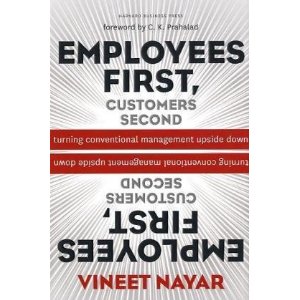5 ways to increase trust through transparency
This blog is reader-supported. When you purchase something through an affiliate link on this site, I may earn some coffee money. Thanks! Learn more.

A couple of times people have said to me that sharing the project budget with their team members is Not A Good Idea.
I don’t know why that is the case – they are stakeholders too. I think it is essential to be transparent about the budget, how it was created and how you, as a team, are doing with spending it. It helps the project team come together with a common objective, and it helps build trust in the way in which things are being done.
In his book, Employees First, Customers Second: Turning Conventional Management Upside Down, Vineet Nayar talks about 5 ways that transparency helps build trust among the stakeholder community.
Let’s look at those now.
1. Understanding the bigger picture
“Transparency ensures that every stakeholder knows the company’s vision and understands exactly how his or her contribution assists the organization in achieving its goals,” Nayar writes.
In project terms, it is difficult for a project team member to contribute effectively without knowing what the bigger picture is. In budget terms, if team members don’t know how things are going overall and how much their elements are costing, they cannot help work more efficiently to get the job done.
2. Generating personal commitment
Nayar says that transparency ensures that “every stakeholder has a deep, personal commitment to the aims of the organization.” I don’t believe this is true.
Transparency may contribute to building this, but it is not the only way you get people to feel as if they are personally committed to a project.
3. Transparency is a given for Gen Y
The younger project team members will expect full transparency, and without it they will be suspicious and untrusting. “They post their life stories in public domains,” says Nayar. “They expect nothing less in their workplaces.”
Again, there is more to this than I think he brings out in the book, especially since the world has moved on a bit since this book was written. Transparency is still important, and software tools are being built with visible audit trails and streams detailing what happened, so the expectation is very much still there.
Transparency about the budget and all other elements of the project will help generate trust in team members of all ages. Generation Y team members may have a different expectation of what is appropriate to share, but sharing (or not sharing) will have an equal impact on the trust levels across the entire team, and help team members of different generations work together.
4. Corporate transparency promotes customer transparency
Nayar says that in a knowledge economy, it is important for customers to share their ideas with companies. This is the way that we find out what products they want, how their lives are evolving and what would make their lives easier. They may also have ideas about solving problems with our products or corporate challenges that we are facing.
“Why would a customer be transparent with a potential partner like us if that company does not trust its employees enough to be transparent with them?” Nayar asks.
This is a fair point. While I would not advocate sharing the project budget with customers (unless your work is in the public sector and this is therefore expected), it is a good idea to share the budget predictions with your suppliers and partners.
Why would you not? It will help them pitch their services at a price that creates a win-win situation for you both.
In one case I heard about, a supplier opted not to pitch for work when they heard the budget figure that the company in question had available. It saved both the company and the supplier a lot of time in the tendering process.
Share your budget figures with people outside the immediate project team. Or at least consider reasons why you shouldn’t, and then critically assess those reasons to see if they still stand up.
5. Transparency helps contractors
Finally, you need to consider the work of contractors.
“The only way these outsiders can get up to speed quickly and be as effective as possible is through sharing of information and complete transparency about the strengths and weaknesses, the issues and concerns, of the assignment,” Nayar writes. “The more transparent the process, the more trust that the outsiders felt in the organization, the more we could reduce the amount of learning time, which would give us an advantage over our competitors.”
If you share project information with contractors, it helps them feel more comfortable in their role. It will also help other team members, who have to deal with these contractors, feel as if the contractors are offering a valuable service and are actually making a contribution.
There is obviously a limit on what you can share that is not commercially confidentially. Signing a non-disclosure agreement might make both parties feel more at ease.
If the contractors operate without full visibility, other team members may well feel as if they cannot trust them to make the right decisions because they do not have all the relevant information.
How transparent are you with your project budget? Do you share this information with stakeholders as willingly as you share other project information? If not, why not?
A version of this article first appeared on ProjectManagement.com during 2012. Read more project management book reviews here.
